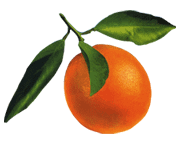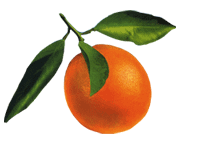12 Feb Zoomifying My Life Away
Since shedding my higher level administration duties at work a few months back I’ve been able to concentrate on design and geeky things. Being creative in my day job –I’m in heaven.
A few weeks ago we introduced a new section to the Smithsonian American Art Museum’s Web site: Interact. We’ll introduce small and fun things to do with our collection and be able to highlight some of the virtual exhibitions we’ve created.

Displaying a detailed photograph on the Web has its drawbacks. It’s impossible to get close and explore the image. Click on this photograph I took to view a zoomified version.
Last week I created my first Zoomify. This application allows the viewer to zoom into an image to view details. One of the drawbacks of displaying pictures online is the small size and resolution required for easy Web viewing. Zoomify eliminates this limitation.
Creating a zoomified image is really simple. Drop a very high-resolution file on top of the application and it automatically slices your artwork into hundreds of small easily loaded image tiles. As you zoom in the program accesses new tiles at higher levels of magnification. All of this is parsed through Macromedia’s Flash application. What you’re viewing is a light-weight (in size) Flash movie.
One of our museum’s signature artworks is Larry Fuente’s Game Fish. Made up of hundreds of toy pieces it’s fun to view it on our museum’s walls. However, it’s been almost impossible to appreciate the work when viewed on the Web. Game Fish was a natural candidate for Zoomify. Take a look.
I got so excited by the possibilities, I was zoomifying all over the place. I did a few more of our artworks (which will be featured in the upcoming weeks) then decided to create one using one of my own images: an aerial photograph I took for a photo documentary called In Our Path. Photographed in the 1980s and 1990s this series documented the building of the “last” freeway in Los Angeles (I’m in the midst of updating the design and code for this Web site and Zoomify will be a good addition).
This photograph now has a Tom Clancy, satellite surveillance feel to it. I scanned the 85 MB source file directly from my negative. The larger the file, the more detail you can see (for a truly magnificent example take a look at this 2.5 gigapixel zoomified image).
My photograph is twenty years old but I had never explored its details as I can now (even on a large 40″ x 48″ enlargement). A coworker found people talking in their backyard!
Like all techniques, not every picture is a good candidate for this process. But if you feel the limitations of displaying Web images and want to be able to show image or technique details, try this out. And, until March you can get this application for free courtesy of VRMag and Zoomify.




odograph
Posted at 15:48h, 06 AprilHi, I played with Zoomify briefly. I think it worked really well for these historic photographs.
My take-away was that Zoomify works best with a scene that has detail, and looks good at various levels of zoom – like your arial photograph, or the “game fish”
Jeff
Posted at 15:59h, 06 AprilYes, I agree, detail works best. Nice images.
Also starting with a large image file increases one’s ability to zoom in. Take a look at this example I just did at work. The source file for this Nam June Paik image was 256 MB.
odograph
Posted at 16:04h, 06 AprilThat’s great. It looks right with no zoom, and has much more further in.
I don’t think I’ll be doing those until I get a better camera ;-). A 3 megapixel camera just gives me 3 hops inward. Well I could stitch, but scanning the old photos is fun, and easier.